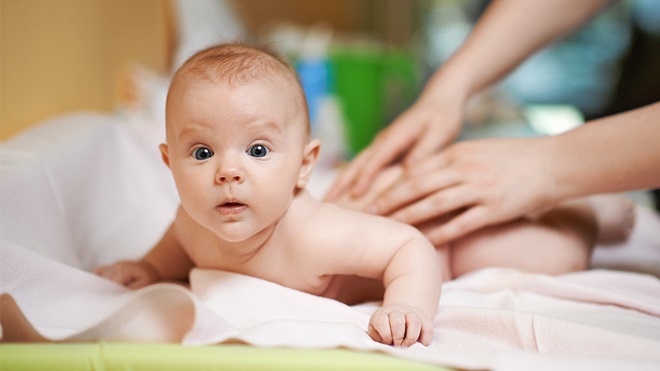Baby change tables can be a handy addition to the nursery and help make nappy changing time more efficient. But without any Australian Standard for how change tables are manufacturer, how can you be sure they're stable enough to stay upright or prevent your baby from rolling off? Our expert reviews are here to help.
On this page:
- Our expert testers
- How we choose what we test
- How we test change tables
- Test criteria explained
- The CHOICE test lab
Our expert testers
Our expert testers Antonio Bonacruz and Matthew Tung are the bee's knees of children's product testing. They've seen all the brands and varying change table configurations on the market, and have put each one to the test. Our testers also sit on the Australian Standards committees for children's products.
How we choose what we test
Our change tables typically come from brands you'll see in mainstream nursery or department stores, or ones that feature prominently when you search for them online. We also choose models with different styles and price points.
To come up with our list, we survey manufacturers to find out about their range of models and we take member feedback on board. Our buyers then purchase products just like you would, either instore or online. This is to make sure that the products we get haven't been 'tweaked' in any way for better performance, or received special treatment during transit.
How we test change tables
Although there is no current Australian Standard for change tables, we know what to look for when it comes to safety. We've also based our test procedures on various existing standards for similar children's products such as cots. There are overseas standards to draw upon as well, including the American Standard for baby changing tables, ASTM 2388.
When testing change tables, we assess the following aspects.
Stability
200 Newtons of downward force (about 20kg) is applied to the edge of the table to see if it tilts or tips. We normally test change tables after following assembly instructions, but we also consider scenarios where consumers may not have installed them correctly.
For example, a heavy change table may require anchorage to the wall to prevent it from tipping and crushing a child. We test its stability without being anchored, just in case a parent or carer fails to do so.

Our experts test change tables with safety in mind to help you choose the right product.
Strength of construction
A 50kg mass is placed in the centre of the changing surface for 60 seconds, and we check whether there is any damage to the table, or if any locks become insecure.
Minimum depth
For a change table to be fully recommended, we require the sides to have a depth of at least 100mm after the recommended mattress is installed. It also needs to pass the roll-off test (see below).
If a change table's sides are under 100mm but it still passes the roll-off test, it may be worth considering if it adequately meets all other requirements.
Roll-off protection
Babies need to be within arm's reach of an adult at all times, but we still check to see if the table can adequately prevent a baby rolling or sliding from the change surface. A 15kg test cylinder is placed parallel to the barrier of the changing surface and the table is tilted sideways at a 15-degree angle. If the cylinder rolls off the barrier, the table will fail, even if its sides are higher than our required minimum depth of 100mm.
Bath
If a change table comes with a bath, we check to make sure it meets safety warning requirements.
Sharp edges and protrusions
We check for edges or points that could injure a child.
Finger and limb traps
We check for any gaps or holes that could trap a small finger or limb using a set of special probes.
Special features
Although they don't form part of the score, we log information to help you choose the best change table for you, such as whether it has wheels, trays or storage pockets.
Test criteria explained
We rate children's products a bit differently to other tests, due to the strong interest in safety. We rate them according to whether they pass or fail major safety tests.
Change tables that we recommend have passed all our safety tests, including the roll-off and change table depth requirements. They may have some very minor failures (usually to do with labelling) but we don't think these are significant.
The CHOICE test lab
We maintain a NATA-accredited lab that is up to date with the latest reference machines and calibrated measurement tools for our testers to bring you accurate results.
We're on your side
For more than 60 years, we've been making a difference for Australian consumers. In that time, we've never taken ads or sponsorship.
Instead we're funded by members who value expert reviews and independent product testing.
With no self-interest behind our advice, you don't just buy smarter, you get the answers that you need.
You know without hesitation what's safe for you and your family. And our recent sunscreens test showed just how important it is to keep business claims in check.
So you'll never be alone when something goes wrong or a business treats you unfairly.
Learn more about CHOICE membership today
Stock images: Getty, unless otherwise stated.



